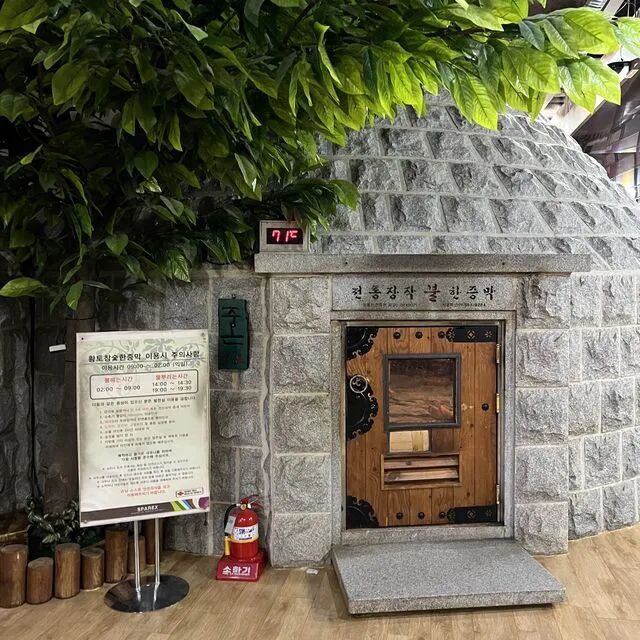
Positive Comments: The Evolution of Bathhouses is a Typical Example of the Upgrading of Traditional Service Industries
The transformation of bathhouses from “community bathhouses” to “urban comprehensive leisure complexes” is a microcosm of the proactive change of China’s service industry in the context of consumption upgrading. The evolution process demonstrates the vitality and innovation ability of traditional industries.
First of all, the diversification of service functions has reconstructed the consumption scenario, meeting the complex needs of contemporary users. Traditional bathhouses had “bathing” as the single core, and their functions were limited to cleaning and basic socializing. In contrast, modern bathhouses, through the “bathing +” model, deeply integrate scenarios such as dining (seafood buffets), entertainment (e – sports, mahjong and chess), accommodation (affordable overnight stays), work (independent office areas), and even health management (traditional Chinese medicine physiotherapy, oxygen – rich rooms). This “one – stop” experience precisely hits the pain points of urban people: young people need a third space for “relaxation + socializing”; office workers need a flexible scenario for “bathing + overtime work”; tourists need a tourism node for “experiencing local culture + relaxation”. For example, a certain bathhouse in Shenyang mentioned in the news has characteristic saunas like volcanic rooms and ice rooms, and also provides a work area with independent TVs and 5G network support. It has even become an “affordable and decent” alternative to budget hotels. This superposition of functions is essentially an efficient utilization of users’ time value – one consumption meets multiple needs, greatly enhancing user stickiness and the average customer spending.
Secondly, the process of industry specialization and standardization has provided a guarantee for service quality, promoting the transformation of traditional “manual skills” into modern service industries. The establishment of the first “Institute of Bathing, Leisure and Health Management Industry” in the country in Shenyang, as mentioned in the news, is a key breakthrough. In the past, services such as back – scrubbing and ear – cleaning relied on the personal experience of masters, lacking systematic training, and the service quality varied. However, the institute has incorporated techniques such as foot – care, scraping, and salt – milk baths into professional courses, which not only standardizes the operation (e.g., keeping the massage room door open throughout to avoid disputes) but also enhances the professional identity of practitioners. It is reported that “academically – trained” back – scrubbers trained by the institute can earn up to 10,000 yuan per month. This not only solves the problem of talent shortage in the industry (the employment demand of 1354 bathing enterprises in Shenyang is high) but also upgrades traditional services from “physical labor” to “professional skills in health management”, laying a talent foundation for the sustainable development of the industry.
Finally, the evolution of bathhouses has become a new carrier of regional economy and culture, contributing to the revival of tourism in Northeast China. In the wave of “Southern tourists flocking to the Northeast”, bathhouses have changed from “a daily routine for locals” to a “must – experience” city card for outsiders. Their design, which integrates diverse cultural elements such as Korean, Japanese, and Northeast China’s hot – spring cultures (such as the joke “if you hate Japan, go to the Korean – style one; if you hate Korea, go to the Japanese – style one”), not only retains the regional character of Northeast people who “value socializing and face – saving” (such as the “small talk” in the sauna room) but also attracts foreign tourists with features like “back – scrubbing + seafood buffet” and “private hot – spring + snow scenery”. This “lifestyle tourism” model is more approachable than traditional scenic spots and injects new growth momentum into the service industry in Northeast China. As implied by the comparison of shared – bicycle data in Beijing in the news, the prosperity of the bathing industry is closely related to the change of urban temperament, and its development potential can even be comparable to phenomenon – level cultural and tourism IPs like “Zibo Barbecue”.
Negative Comments: Hidden Worries behind the Rapid Evolution – Dissolution of Tradition, Homogenization, and Operational Pressure
Although the “crazy evolution” of bathhouses has brought vitality, it has also exposed common problems in the transformation of traditional service industries. Some changes may weaken its cultural core and even affect long – term competitiveness.
Firstly, the community attribute is weakened, and the “public space” value of traditional bathhouses is gradually lost. In the early days, bathhouses were the “social center” of street residents: workers, neighbors, and grandparents and grandchildren would scrub each other’s backs by the pool. People would watch TV together in the hall and chat about football. Back – scrubbers would chat with customers, and heart – warming stories like “a back – scrubber raising a top – notch university student” could emerge. This low – cost social scenario based on geographical and kinship relations was an important carrier of community cohesion. However, modern bathhouses have expanded their service radius (attracting foreign tourists and covering the whole – city customer group). The rest area has changed from “shared TV” to “independent screens”, and back – scrubbers have changed from “chatting” to “promoting body scrubbers”. The natural interaction between strangers has been replaced by commercial services. As mentioned in the news, “there are fewer and fewer casual conversations among semi – acquaintances”. When bathhouses change from “community public spaces” to “consumption places”, the urban culture and emotional connections they carry may gradually dissipate.
Secondly, excessive commercialization has led to homogeneous competition, and some innovations deviate from the core needs of users. In order to attract traffic, many bathhouses blindly add “internet – famous” elements: seafood buffets, e – sports rooms, scripted murder mysteries… However, some functions are weakly related to the main business of “bathing”, and there may even be a waste of resources. For example, as mentioned in the news, “mid – to high – end bathhouses in first – tier cities open work areas”, seemingly meeting the “urgent needs of office workers”, but the actual demand may be overestimated. Most users’ core purpose of choosing a bathhouse is still relaxation, not overtime work. If they over – emphasize “5G bathing +”, it may blur the positioning. In addition, concepts like “volcanic rooms” and “ice rooms” in saunas, although eye – catching, are essentially “conceptual packaging” imitating Korean and Japanese bathhouses, lacking the unique expression of Northeast local culture. When bathhouses across the country are caught in the competition of “comparing the grade of buffets and the number of scenarios”, it may ultimately lead to user aesthetic fatigue and the industry falling into the dilemma of “increasing quantity without improving quality”.
Thirdly, the contradiction between the rising operating costs and service standardization may affect the sustainability of the industry. The integration and high – end development of modern bathhouses require a large amount of upfront investment: decoration costs (such as luxury swimming pools and characteristic saunas), labor costs (training of professional technicians), and operating costs (catering supply chain, equipment maintenance) are all much higher than those of traditional bathhouses. For example, the closure of Shenghao Club because it “quickly lost competitiveness”, as mentioned in the news, reflects the accelerating update and iteration of the industry. If they cannot continuously invest in innovation, they may be eliminated by the market. At the same time, although Shenyang has established a bathing college, there is still a shortage of professional talents nationwide. Some bathhouses may hire non – professional personnel to reduce costs, resulting in fluctuations in service quality (such as improper back – scrubbing intensity and non – standard physiotherapy operations), which may damage the brand reputation.
Suggestions for Entrepreneurs: Finding the Optimal Solution for “Bathing +” between Tradition and Innovation
The evolution of bathhouses is essentially a “demand – driven service upgrade”. Entrepreneurs need to optimize the supply with user needs as the core while retaining the cultural core. Specifically, they can focus on the following four aspects:
Dig Deep into Local Culture and Create a Differentiated Experience: The “community socializing” and “urban atmosphere” of traditional bathhouses are irreplaceable cultural assets. Entrepreneurs can retain these elements through scene design. For example, they can set up a “memory corner of old bathhouses” in the rest area (displaying old – fashioned bath towels, mechanical locks, etc.) or regularly hold a “neighborhood back – scrubbing day” (inviting community residents to experience the traditional back – scrubbing process), upgrading “bathing” from a consumption behavior to a “cultural experience”. At the same time, they can develop unique products in combination with the regional characteristics of Northeast China (such as black – soil hot springs and winter ice and snow) to avoid homogenization with Korean and Japanese bathhouses.
Focus on Core Needs and Rationally Expand “+” Services: The core of bathing is “cleaning + relaxation”, and other functions (dining, accommodation, work) should revolve around this core. For example, seafood buffets can feature “Northeast special ingredients” (such as sea cucumbers from Liaoning and yellow clams from Dandong) instead of blindly pursuing “Australian lobsters and salmon”. The work area can be positioned as a place for “temporary rest + light office work” rather than replacing office buildings. Through user surveys (such as questionnaires and member feedback), they need to clarify “which functions are urgent needs and which are just icing on the cake” to avoid waste of resources.
Strengthen Talent Training and Service Standardization: Professional talents are the cornerstone of service quality. In addition to cooperating with vocational colleges (such as the model of the Shenyang Bathing College), entrepreneurs can establish an internal training system to standardize techniques such as back – scrubbing and physiotherapy (such as formulating a “back – scrubbing intensity grading table” and “sauna room temperature management regulations”). At the same time, they should pay attention to the “emotional training” of service personnel – guiding them from “promotion” to “care” (such as actively asking about customers’ physical conditions and recommending suitable physiotherapy projects). In addition, they can inherit the service details of old bathhouses through the “mentor – apprentice system” (such as providing free ginger tea to dispel the cold and helping customers keep their glasses) to enhance user trust.
Pay Attention to the Low – Tier Market and Niche Customer Groups: In addition to mid – to high – end comprehensive bathhouses, community – type bathhouses still have room for survival. Middle – aged and elderly users in low – tier cities or old communities still have a demand for “5 – yuan bathhouses” and “acquaintance socializing”. Entrepreneurs can explore a “graded service” model: layout comprehensive bathhouses in core business districts and open small stores with “basic bathing + simple physiotherapy” in communities to cover customers of different ages and consumption levels, avoiding the loss of customer groups caused by the “one – size – fits – all” upgrade.
The evolution history of bathhouses is essentially an enlightenment for “how traditional service industries can be reborn in the wave of the times”. It requires entrepreneurs to break boundaries with innovative thinking and also guard the cultural root with a sense of awe. Only by finding a balance between “change” and “unchange”, can the bathing industry truly upgrade from a “bathhouse” to an “urban lifestyle aesthetic space”.
- Startup Commentary”The Incomplete Evolution History of Bathing Centers”
- Startup Commentary”Starting from 358,800 yuan, Maserati Slashes Prices Drastically to Survive”
- Startup Commentary”Monopoly: Always the Best Business”
- Startup Commentary”A PE Giant Spent $6.6 Billion on a Crematorium”
- Startup Commentary”In a Low-Sports Year, Social Assets Still Hold Great Value”




